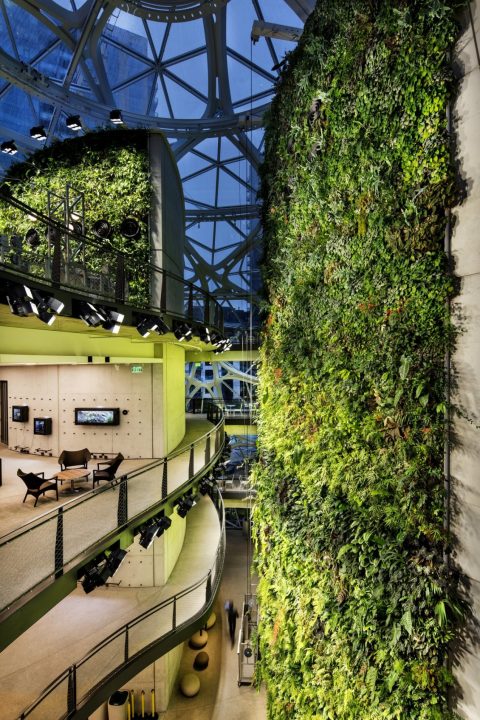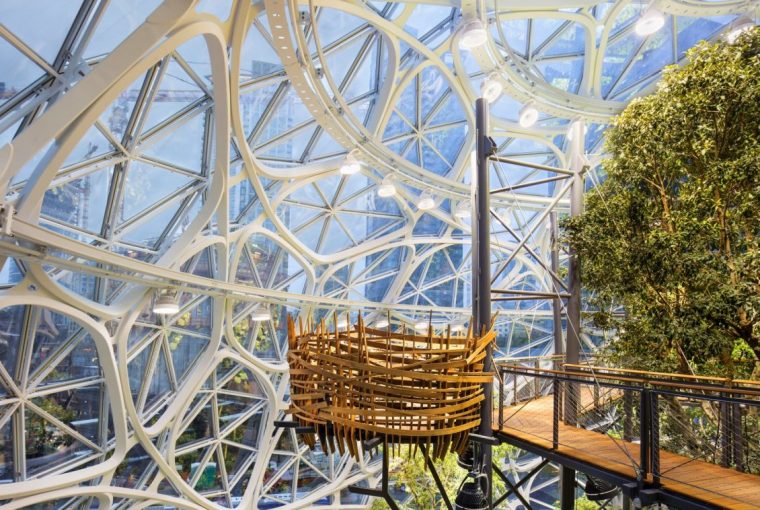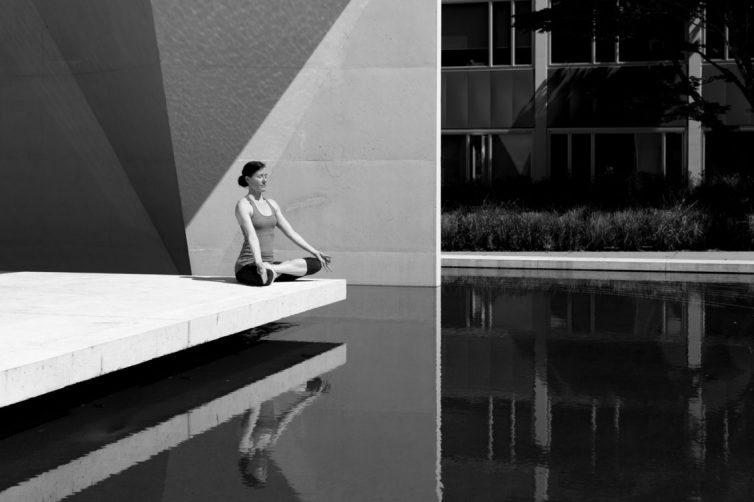Workplace stress is one of the major causes of absenteeism in the UK. Whether it’s the workload itself or a stifling office environment, employees can sometimes struggle to cope with the pressures of working life.
But there is a way to reduce employee stress and improve their overall wellbeing in the office. The answer? Biophilic Design.
Office refurbishment specialists, Axis House, recently created an eBook on Biophilic Design titled ‘The Effect of Biophilic Design on Wellbeing‘ which explores what biophilic design is, how it improves wellbeing in not only the working environment, but also in schools and hospitals: and offering advice on how to make biophilic design a reality in your workplace or even your home.
Biophilic design defined
So, what is biophilic design? Well, it stems from the American Biologist Edward Osborne Wilson’s ‘biophilia hypothesis’, also known as ‘the urge to affiliate with other forms of life’. Therefore, a truly biophilic design must incorporate each and every element of nature so that the occupant feels that desired connection to the wild, untamed outdoors.
It’s about much more than just scattering some plants around the office though as it incorporates all the following:

- A view of nature – overlooking scenes of the outdoors, or perhaps creating a view of nature if none is available
- Non-visual stimuli – stimulating the other senses; touch, smell, sound whether that be through a herb garden or waterfall
- Airflow variability – encouraging natural temperatures which mimic the outdoors (warmer at midday, cooled in the mornings and evenings, introducing wind etc.
- A presence of water – having that flow of water, either by manmade waterfall or by introducing living water sources into the building
- Dynamic lighting – varying the intensity of light throughout the day to mimic natural lighting
- Biomorphic patterns and shapes – using a variety of patterns, shapes and contours which mimic natural designs
- Spatial hierarchy – create a natural alignment of space throughout the buildings layout
The effect on wellbeing
Each element of biophilic design offers a different improvement on wellbeing. Studies have shown, for example, that a view of nature is connected to lowering blood pressure and heart rate as well as improving engagement and overall happiness. Biomorphic patterns and shapes are known to reduce stress due to an induced shift in focus and dynamic lighting can even help to improve sleeping patterns and increase productivity.
It’s clear that biophilic design has a vast amount of influence on wellbeing and is something which is being experimented with more and more. For example, we see projects such as Amazon’s ‘Spheres’ in Seattle, USA bringing a whole new approach to the working environment.
To find out more about biophilic design, you can download Axis House’s whitepaper – read about fascinating case studies, and advice on how to implement biophilic design on a budget.
Main Image Source: © Steve Ringman/The Seattle Times










